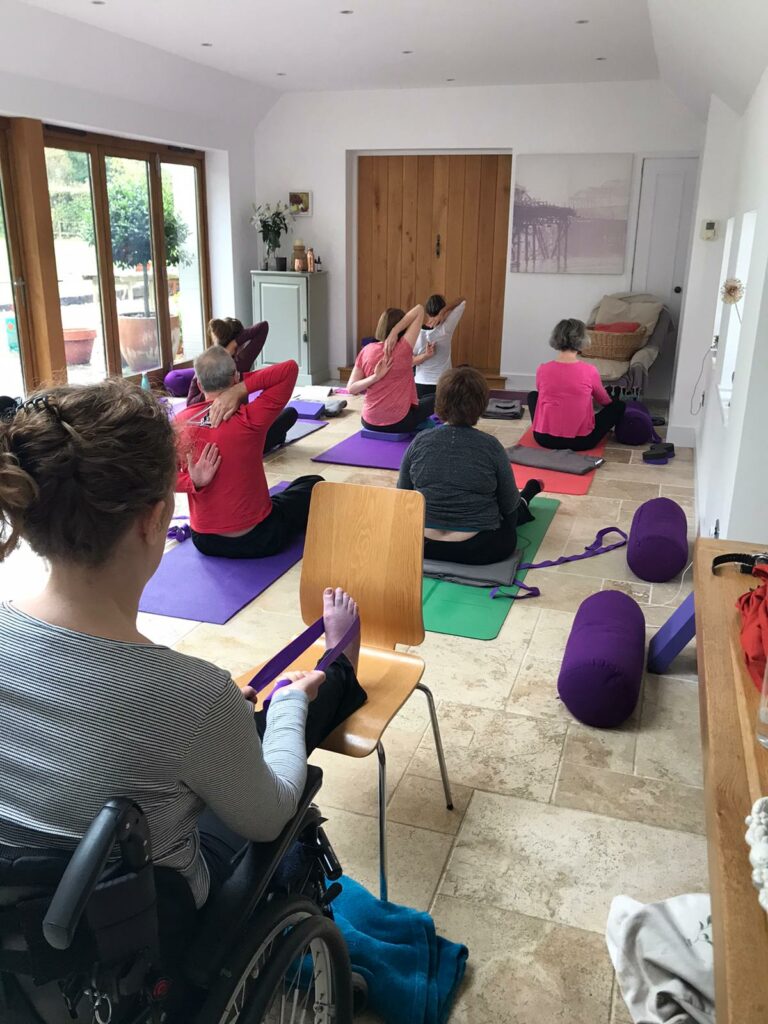
Here is some advice for those with progressive MS and how best to exercise.
Starting and maintaining an exercise routine is challenging for many of us, irrespective of a diagnosis of MS. It can be even more difficult when you are feeling tired, weak or in pain. Everyone with MS may feel like this sometimes. In fact, this page is just as relevant to people with a Relapsing Remitting diagnosis: MS is unpredictable, and any of us may have days when we don’t feel very strong or energetic.
Those of us with a diagnosis of Progressive MS may also be adapting to living with functional loss, such as reduced mobility, loss of balance and spasticity. Too few exercise teachers recognise that ‘exercise’ can be psychologically, as well as physically, challenging: for example, going to the gym may be a reminder of our changed capacities and the ways in which our bodies may differ from narrow social norms.
The advice given here by community member and yoga teacher, Veronique Gaultier-Simmons, recognises these challenges and is based on principles of self-compassion and awareness that apply to all of us.
Meanwhile, it is useful to remember that movement and exercise are especially beneficial to people with PMS. Developing muscular strength can improve our immune response, protecting against viruses and infections, and also help protect against neurodegeneration. Moving our bodies renews the neural pathways that enable physical function, and even small movements can help maintain function.
The value of exercise for people with PMS was discussed in a recent Finding Hope with Overcoming MS webinar, ‘Living Well with Progressive MS’. Now over to Veronique for some great tips.
Try and include some breathing exercises in your exercise regime. Shallow breathing depletes energy and many people feel a boost of energy once they start to breathe deeply and consciously. It also helps to relax, release tension but also strengthen your respiratory muscles.
The less we move, the weaker our muscles get and the more limited our range of motion. When creating programmes for people with progressive MS, I like to think in terms of range of motion, the aim being to prevent loss or even improve it. Conscious movements that move muscles and joints in all direction help to do so.
Some people are reluctant to use adaptive options and feel exercise only has a positive impact if you actually move on your own. But this is not the case. You still experience benefits if someone – or electric stimulation- helps you complete the movements. There are now a wider range of adaptive options from chair yoga, tai chi or aerobics to functional electric simulation cycling. They have the added benefit of allowing people to practice safely.
When we feel stiffer, our natural reaction is to stretch. But it’s also important to strengthen muscles. A healthy muscle is both flexible and toned. It doesn’t necessarily means lifting weights. You can use elastic bands or your own body weight to work on your strength.
On bad days, doing 5 minutes might be all you can safely do. That’s absolutely fine. Be happy with yourself! What often happens is that after 5 minutes, you’ll decide you might as well do another 5 minutes or 10… Be happy with yourself too! Rather than blaming yourself for not doing more, be happy for whatever you do.
Finally, if you need some extra motivation, I would encourage you to watch or re-watch Sue’s story of hope or reach out to others in our Overcoming MS community who will support you.
Wishing you all the very best of luck and lots of joy exercising!
For more suggestions of specific exercise for those using a wheelchair, click here.